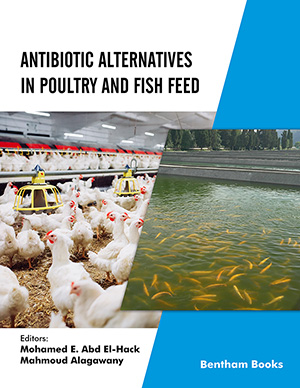[1]
Lafitte R. Relationship between leaf relative water content during reproductive stage water deficit and grain formation in rice. Field Crops Res 2002; 76(2-3): 165-74.
[2]
Fazeli RM, Theghat al-Islami MG, Mousavi SGHR. Impact evaluation of drought stress and superabsorbent on water relative content and leaf chlorophyll index and their relations with grain yield of corn. Crop Physiol J Islamic 2010; 2(1): 19-31.
[3]
Haghighi M, Mozafarian M, Afifi-pour Z. Impact evaluation of
superabsorbent polymer and different levels of deficit irrigation on
growth and some qualitative and quantitative properties of
lycopersicum esculentum L. J Horticul Sci 2014; 28(1): 125-33.
[4]
Wu L, Liu M, Liang R. Preparation and properties of a double-coated slow-release NPK compound fertilizer with superabsorbent and water retention. Bioresour Technol 2008; 99(3): 547-54.
[5]
Nazarli H, Zardashti MR, Darvishzadeh R, Najafi S. The effect of water stress and polymer on water use efficiency, yield and several morphological traits of sunflower under greenhouse conditions. Notulae Scientia Biologicae 2010; 2(4): 53-8.
[6]
Shukla SK, Dixit RS. Nutrient and plant population management in summer green gram (Phaseolus radiates). Indian J Agrono 1996; 41(1): 78-83.
[7]
Amiri Deh Ahmadi SR, Parsa M, Nezami A, Ganjeali A. The effects of drought stress at different phenological stages on growth indices of chickpea (Cicer arietinum L.) in greenhouse conditions. Iranian J Pulses Res 2010; 1(2): 69-84.
[8]
Allahyari S, Golchin A, Vaezi AR. Study on effect of super absorbent polymer application on yield and yield components of two chickpea cultivars under rainfed conditions. J Plant Produc 2013; 20(1): 125-40.
[9]
Rajabi L, Sajedi NV, Roshandel M. Yield and yield components reaction of rainfed pea to salicylic acid and superabsorbent polymer. J Crop Produc Res 2012; 4(4): 343-53.
[10]
Abhari A, Azizi A, Hareth AB. The effect of superabsorbent on pea yield under drought stress of the season end. J Crop Produc 2017; 10(1): 191-202.
[11]
Timouri A, Shiroui H, Mohamadi BH. Evaluation of drought stress
and superabsorbent effects on physiologic properties of fava bean
varieties.The first international conference of planning, conservation,
environmental protection and sustainable development,Hamedan,Iran. February 20, 2013..
[12]
Sio-Se MA, Sadeghi F, Kanouni H, Bahramnejad B, Gholami S. Effect of drought stress on physiological traits, grain yield and its components in chickpea (Cicer arietinum L.) genotypes. Iranian J Crop Sci 2014; 16(2): 91-108.
[13]
Nehbandani A, Soltani A, Darvishirad P. Effect of terminal drought
stress on water use, growth and yield of chickpea (Cicer arietinum
L.) J Plant Ecophysiol 2015; 7(23): 17-27.
[14]
Moradi E, Gorji AH, Nakhjavan Sh, Shiroui H. Effect of drought stress on the yield component of Pisum sativum L. National Conference on Agricultural Science and Technologies. Iran. 2013.
[15]
Abbaslou L, Kazemeini SAR, Edalat M, Dadkhodai A. Effect of drought stress and planting manner on the some physiologic and biologic characteristics of two Cicer arietinum L. cultivar. J Crop Improvement 2014; 16(4): 933-43.
[16]
Alizadeh A. Planning the irrigation systems. Imam Reza publication 2007.
[17]
Allahdadi I, Yazdani F, Akbar GA, Behbahani SM. Evaluation of
the effect of different rates of superabsorbent polymer (Superab
A200) on soybean yield and yield components (Glysin max l.).3rd Specialized Training Course and Seminar on the Application of
Superabsorbent Hydrogel in Agriculture. Iran 2005.
[18]
Tuba BB, Narin KA, Akar DA. The effect of irrigation on spring-sown chickpea. J Agron 2004; 3: 154-8.
[19]
Ullah AJ, Bakht M, Shafi W, Islam A. Effect of various irrigations levels on different chickpea varieties. Asian J Plant Sci 2002; 1(4): 355-7.
[20]
Pour IP, Habibi D, Tavasoli A, Zahedi H, Tohidi-Moghadam HR. The effect of super absorbent polymer on physiological and agronomic traits of different red bean varieties under drought stress in green house condition. Plant Manag Ecosys 2009; 6(21): 92-75.
[21]
Singh KB, Malhotra RS, Halila MH, Knights EJ, Verma M. Current status and future strategy in breeding chickpea for resistance to biotic and abiotic stresses. Euphytica 1994; 73: 137-49.
[22]
Jalilian J, Modarres-Sanavi AM, Sabaghpour SH. Effect of plant density and supplementary irrigation on yield, yield components and protein content of four varieties of chickpea in rain fed condition. Agri Sci Nat Res 2005; 5: 42-51.
[23]
Shabiri S, Gholazani K, Golchin A, Saba J. Effect of water deficit on growth and grain yield of three cultivar of chickpea in Zanjan. Agri Sci Nat Res 2007; 2: 32-50.
[24]
Hosseini NM, Palta JA, Berger JD, Siddique KH. Sowing soil water content effects on chickpea (Cicer arietinum L.): Seedling emergence and early growth interaction with genotype and seed size. Agric Water Manag 2009; 96: 1732-6.
 23
23 7
7 1
1 1
1



















